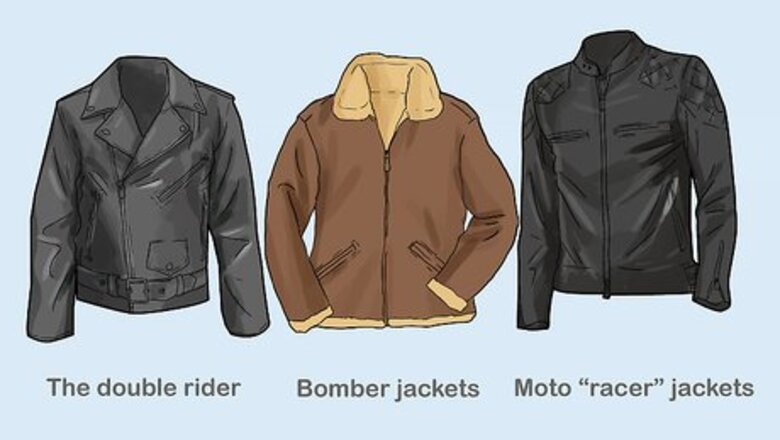
views
Matching Your Style
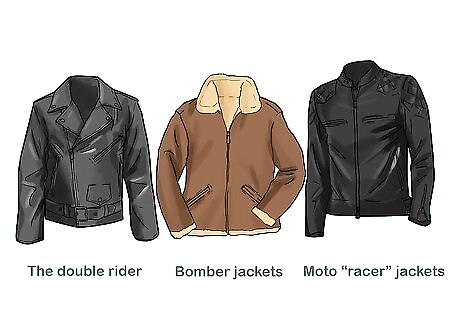
Compare the most popular jacket styles. Bomber jackets, double riders (also called “Schott Perfecto”), and moto “racer” jackets are the most common, classic leather jacket styles. The best jacket style for you will be the one that matches your taste. Start by looking at variations of these three styles. The double rider is considered a classic American leather jacket. While it varies between different manufacturers, it usually has an angled zipper across the front, wide lapels, and a flared collar. Bomber jackets are waist length, casual, and have a soft inner lining. The lining usually extends to the collar, so it is fabric instead of leather. They typically have large pockets and are built for warmth and comfort. Moto “racer” jackets are the dressiest leather jackets, with a snug fit and a small or absent collar.

Get the perfect fit. You want your leather jacket to fit snugly, but not so tight that you can’t move your arms. When trying on your jacket, be sure to wear the type of clothing that you will wear underneath it on a normal day—this will help you ensure that there is enough room inside the jacket. Hug yourself and lift your arms above your head to be sure that you are able to move comfortably without pulling the back of the jacket too much. Armholes that are higher up on the jacket will give you a wider range of motion than lower armholes, which tend tend to pull on the body of the jacket when you move your arms. Be sure to check the sleeve length of the jacket. You will want the sleeves of your jacket to stop just before or at your wrists. They shouldn't extend down over your hands.

Stick with black or brown. Of course, the color that you choose depends on your personal preference. Just keep in mind that black and brown are the most versatile colors, and they will hide imperfections and marks better than a colored jacket. If you want to wear your leather jacket to dressy events, consider a moto "racer" jacket in black or brown.
Choosing the Right Skin
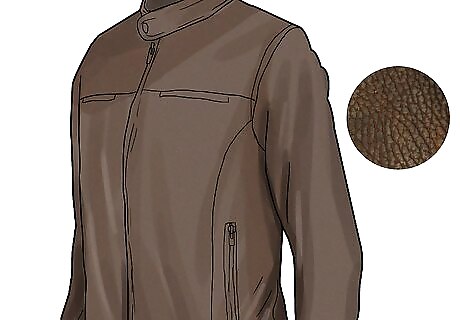
Choose cowhide if you want a tough, durable jacket. Cowhide is one of the most common and most affordable types of leather used in leather jackets. It is very tough and stiff at first, but as you wear the jacket in, it will become softer and more supple. If you want a jacket that is durable and will provide maximum protection, go for a jacket made of cowhide. Cowhide is most often used for motorcycle jackets, due to its thickness and strength. Calfskin is a more expensive alternative to cowhide—it has the durability of cow skin but is much softer. Pigskin and Bison skin have similar qualities to cowhide. Both are very durable. Bison skin has a large, deep grain pattern.
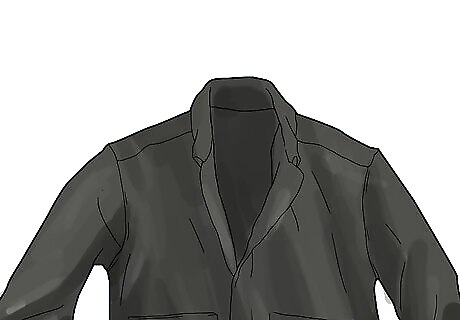
Go with lambskin for a softer, smoother leather. Lambskin is soft, supple, and lightweight, which means you can wear it year round. Lambskin jackets are more expensive than cowhide or horsehide. Buy a lambskin jacket if you are willing to spend a bit more money, and if you want a smoother, softer leather. Lambskin is popular for being extremely lightweight and comfortable, but this also makes it less durable and more prone to tearing. Consider what type of activities you will be doing when you wear the jacket to help determine if lambskin is the best choice for you.

Consider goatskin for a durable, soft, and flexible leather jacket. Goatskin is slightly less buttery soft than lambskin, but is still soft and supple. Choose a goatskin jacket if you want a soft yet durable jacket with a slightly pebbled grain. Also, goatskin jackets are known for looking better as they become worn in over time. Goatskin leather is used for the U.S. Navy’s G-1 jackets and the U.S. Air Force’s A-2 flight jackets.
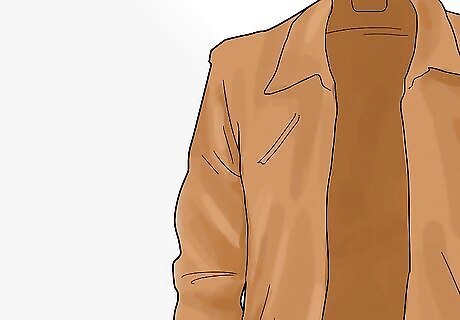
Get a suede jacket if you prefer a more velvety texture. Suede is made from the underside of the animal’s hide, and is thinner and more delicate than leather. Suede jackets are typically made from goat or lamb suede—lamb is softer, and goat is more durable. Keep in mind that, if you choose suede, you should never let it get wet. When it does, it dries extremely hard.
Examining the Details for Quality
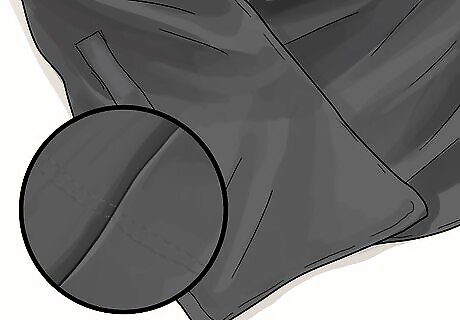
Look closely at the stitching. You can tell a lot about the quality of the jacket by examining the stitching, both inside and outside. Are there loose ends on the thread? Does the thread look thin in areas? To help determine if the jacket is good quality, make sure to look for dense and even stitching throughout the jacket.
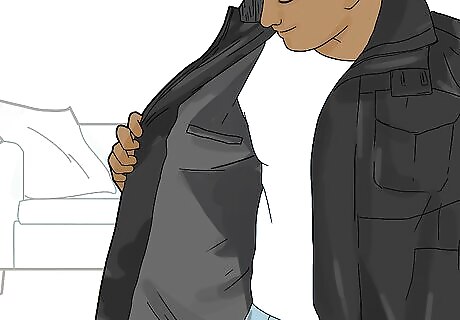
Pay attention to the lining. Lower quality leather jackets will have a thin or cheap-feeling synthetic lining. This type of lining is more likely to rip and to be less breathable. Higher quality jackets will have two separate linings—one in the body, and another in the sleeves. The lining of the body should be a thick cotton or high-quality synthetic fabric, and the sleeves should have a soft, silky lining.

Look for heavy zippers that zip smoothly. Try zipping the jacket up and down a few times to see how it feels. A high quality zipper will zip up easily, and will feel relatively heavy. Look to see what brand the zipper is to help you determine the jacket’s quality. YKK is a common zipper brand that is quite cheap. More expensive jackets may use the zipper brand RiRi, or another custom zipper that feels heavy and sturdy.
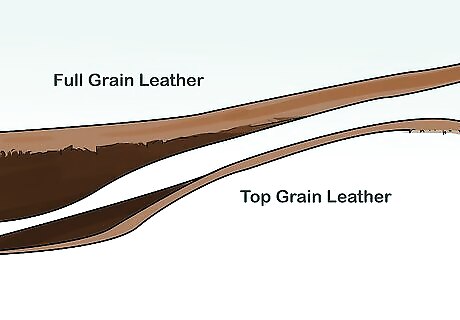
Assess the grain. Different jackets are made from leathers with a different grain. If you want a breathable jacket that looks more natural, with natural markings of the animal and natural oils, go for full grain leather. If you want a thinner, more comfortable leather, choose naked top grain leather instead. "Naked" top grain is top grain leather that has not been sanded down and that still retains its natural grain.
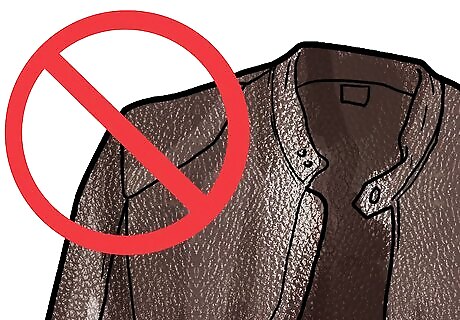
Avoid over corrected leather. Corrected leathers are sanded down, and then coated with oils and dyes. These processes remove the original grain of the leather, and can often make it look fake, plasticky, and without character. Often, the leather is stamped with an artificial animal skin grain. If you want leather that looks more natural, stick with leather that is uncorrected or minimally corrected. One thing to keep in mind is that all corrected leather is made from top grain, but not all top grain leather is corrected. For a more natural looking jacket, stick with either full grain or naked top grain leather.




















Comments
0 comment